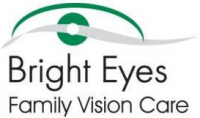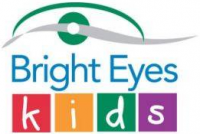Vision Therapy FAQ
Bright Eyes Vision Therapy Program
At Bright Eyes, our job is to make sure that vision does not limit the potential of our patients. If person’s eyes don’t move or change focus properly, they may experience difficulty reading, driving, or performing visual tasks at school or at work. Vision Therapy is a non-invasive, pro-active option in these cases. We offer Vision Therapy at both of our Tampa offices. Our once-a-week Vision Therapy program has proven successful in hundreds of patients, allows patients a more flexible schedule, requires home practice (like music lessons), and offers an affordable fee structure. Our therapists work one-on-one with each patient every week, and the doctors work with the therapists to plan a custom program of therapy that fits the needs and personality of each patient.
Here are some common questions:
What is Vision Therapy?
Vision Therapy is a program of specific activities to help people learn to control their eyes so they can read, write, drive, and do the other things they need to do to be successful in life. The most common diagnoses proven to be treatable by Vision Therapy include amblyopia, convergence insufficiency, and accommodative insufficiency. Strabismus and Binocular Vision Dysfunction may also be treatable, but a thorough evaluation is needed to make the determination if any patient is a good candidate for vision therapy.
Unlike other forms of exercise, the goal of Optometric Vision Therapy is not to strengthen eye muscles. Your eye muscles are already incredibly strong. Optometric Vision Therapy should not be confused with any self-directed program of eye exercises which is or has been marketed to the public. Optometric vision therapy is supported by ongoing evidence-based scientific research. Read the latest research published on optometric vision therapy
Why is once-a-week therapy effective?
Vision therapy is a system of helping the brain learn to move and focus the eyes in a comfortable, coordinated way. Like music lessons, sports practice, and all other forms of learning, this happens best with some hands-on sessions, trained instructors and home practice. Once-a-week therapy combines one-on-one time with a vision therapist to learn new concepts and practice time at home to master them. This independence also encourages patients to take greater ownership, empowering them to transfer the new visual skills to their everyday life.
Is Vision Therapy a new practice?
No. It has been used successfully in different forms for over 80 years and is taught in all optometry schools. But only a few doctors, such as Dr. Nate and Dr. Beth, add an additional year of residency training to learn vision therapy.
How do I know if my child needs Vision Therapy?
Adults often recognize symptoms listed below. But children do not usually complain of vision problems directly. So we ask and test for different symptoms, such as:• Blurry, or uncomfortable near vision• Double vision, words might run together or separate• Head tilt while reading• Holding reading material close to face• Headaches/ fatigue• Skipping lines when reading• Letter reversals• Poor coordination• Bumping into objects
You can download a complete symptom survey here. The survey and a doctor's diagnosis is the first step, but further testing is needed to determine if Vision Therapy will help, how long a treatment program might be, and what the specific plan for the program will be.
Another doctor thinks me or my child needs Vision Therapy. What’s my next step?
If your primary care optometrist refers you or your child to our office, we ask that you request a copy of the exam results to be sent to our office, in addition to the referral letter. If a primary care doctor, pediatrician, psychologist or occupational therapist refers you for an evaluation, a comprehensive exam will need to be done first. Following this, we will schedule a binocular vision evaluation. (Binocular- Latin derivation meaning involving both eyes: Bin = two-fold; Oculus = eye). At this evaluation, the doctor will perform a series of tests to thoroughly evaluate how well both eyes work together. The evaluation also includes a conference with the patient and/or parents to discuss findings and treatment options. If Vision Therapy is an option, the doctors will give you details about our program.
My child just had an eye exam. Do I need to have another one? Can I just go straight into Vision Therapy?
Although your primary care optometrist or ophthalmologist may have diagnosed your child with a binocular issue, our doctor is still unaware of the extent of the concern. For example, in addition to a diagnosis of Esophoria from a routine eye exam, the binocular evaluation will allow the doctor to figure-out the cause of the dysfunction: it could be involuntary or voluntary. In short, this evaluation directs the doctors’ approach to the patients’ situation, as well as the plan for vision therapy sessions.
How long does Vision Therapy take? How much does Vision Therapy cost?
Dr. Nate and Dr. Beth plan every unit of vision therapy specifically for each patient. Since each case depends upon a patient’s diagnosis and severity, the length of treatment will vary person to person. A course of in-office therapy, includes weekly one-on-one sessions with a trained vision therapist, periodic evaluations with the doctor, and all materials necessary for home therapy. Most treatment programs last between 4 and 9 months, and the fee usually ranges between $2,500 to $5,000, but there are shorter and longer cases as well. Vision Therapy is not one-size fits all! For patients that are younger or have unique circumstances, we can often accommodate them with variable length programs at a reduced cost. Should you decide to have vision therapy with our office, we will explain in detail how many units would suffice for you, or your child, as well as briefly describe a few of our available payment options.
Does insurance cover Vision Therapy?
This topic is very confusing. We have found that most medical insurance plans will not cover vision therapy, excluding it as an elective procedure and often as “unproven” because their exclusion policies are not up-to-date with the research. Therefore, many plans specifically exclude Vision Therapy, just as they might exclude orthodontics. However, some plans have a specific list of diagnoses and procedures that MAY be covered. Due to this inconsistency within medical insurances, we do not bill medical insurances for Vision Therapy; our doctors are not “in-network providers”. Nevertheless, patients are welcome to try and submit receipts for possible out-of-network reimbursement/coverage. We will supply all of the codes, and fill out any forms necessary to help you. More information can be found about this at COVD.org.
Is vision therapy only for children?
No, vision therapy can benefit patients of any age who want to improve their visual skills. We have worked with children, parents, and grandparents. There is a video on YouTube of a 101 year old patient encouraging adults of any age to do vision therapy. All it takes is a desire to improve.
If you have more questions, please feel free to call our office! We are happy to help you understand the process, and ultimately to help you receive the treatment you or your child needs!

